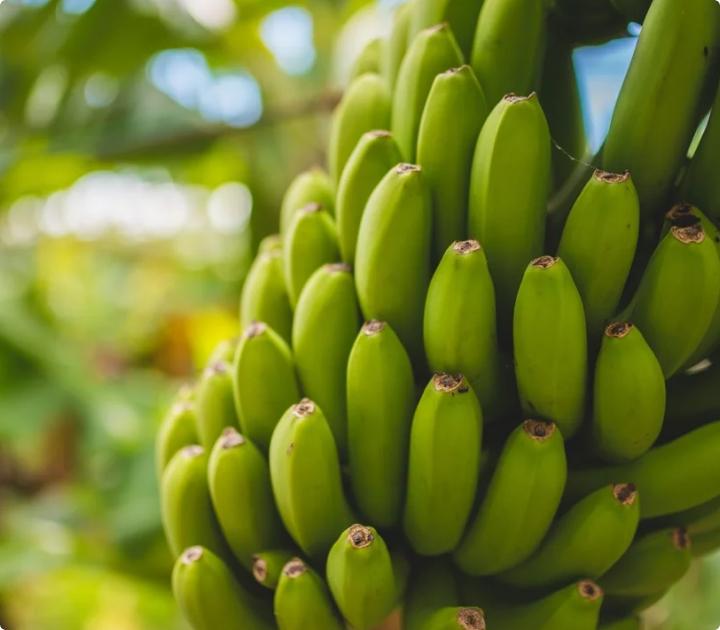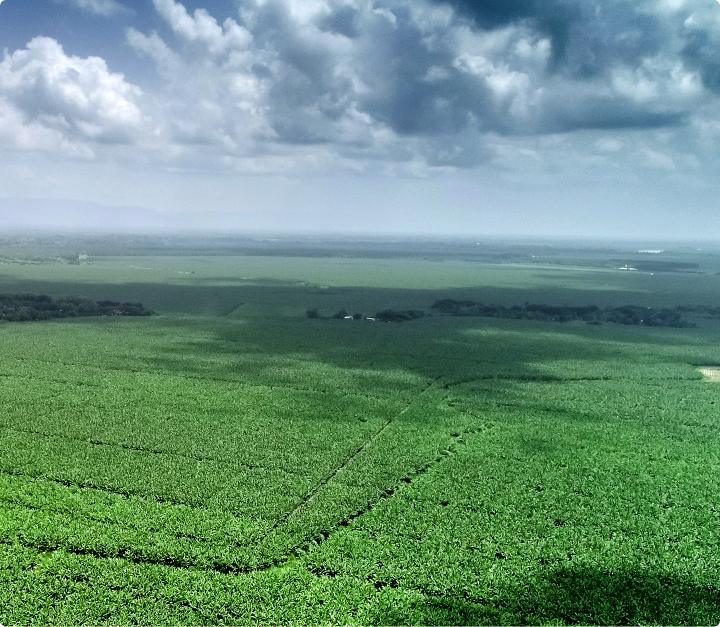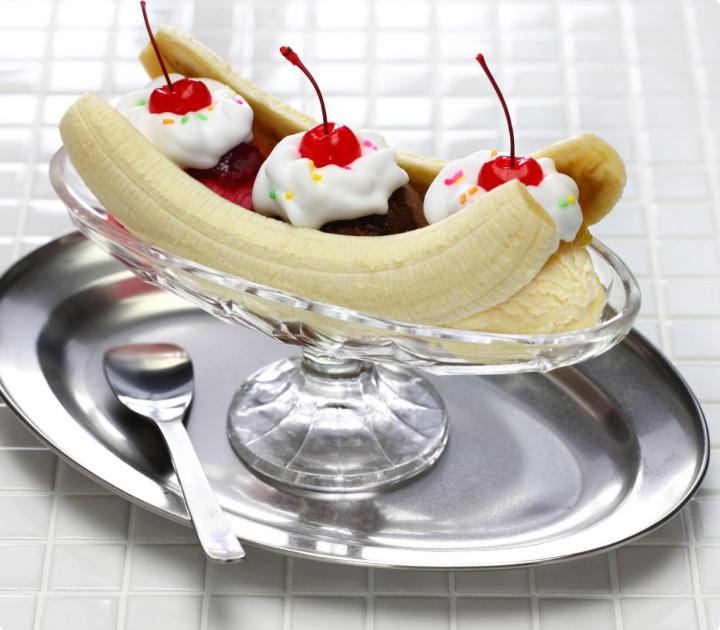
Articles


Banana
Banana (lat. Músa) is a genus of perennial herbaceous plants of the Banana family (Musaceae), from 2 to 9 m high, with a powerful root system, a stem protruding above the ground and 6-20 leaves.
Flowering occurs 8-10 months after the active growth of the plant. Fruits develop only from female flowers. The length of the fruit varies from 3 to 40 cm, the thickness is from 2 to 8 cm. The color of the peel can be yellow, green, red or even silvery. The flesh of the fruit is white, creamy, yellow or orange. In an immature state it is firm and sticky, but as it matures, it becomes soft and juicy. Up to 300 fruits with a total weight of 50-60 kg can be placed on one axis. Bananas have a biological phenomenon known as negative geotropism. During formation, the fruits are directed downward by gravity, however, as they grow under the influence of hormones, one or more axes begin to grow vertically upwards.
For the first time, the name Musa, which later became scientific, was assigned to a ...
Read more


The origin of bananas
Banana is one of the oldest cultivated plants. Its homeland is considered to be the islands of the Malay Archipelago, where, as scientists believe, the ancient inhabitants grew them and ate them as a supplement to the fish diet. Traveling around the islands of the Pacific Ocean, they stocked up on the fruits they knew and thus contributed to the spread of bananas.
One of the first written mentions of bananas is contained in the ancient Indian manuscripts “Mahabharata”. The earliest written references to this plant have come down to us in the monument of Indian culture Rigveda (XVII-XI centuries BC) - probably by that time bananas with the help of sailors had already been moved to the Indian subcontinent.
Some scientists believe bananas were also known in South America before the arrival of Europeans. The claims are substantiated by the fact that the remains of banana leaves were found in Peruvian Indian tombs. In addition, some believe that the “paradise fruit”, in the Old ...
Read more


The emergence and development of the banana industry in Ecuador
Banana production began in Ecuador in 1910, however, the industry did not experience a boom until 1948. In 1948, the government of President Galo Plaza began issuing agricultural loans, lowering tariffs, building ports, coastal highways, and made efforts to control pests.
At its peak in the mid-1950s Ecuador was the largest banana producer in the world. In 1954 five companies including Standard Fruit, United Fruit, and Noboa handled 80 percent of Ecuador's banana exports. Ten years later there were already 3,000 banana farms in the country, each averaging about 158 acres in size.
In 1960, bananas exported from Ecuador accounted for 25 percent of world production, outside the production of all Central American countries. In the late 1950s, a fungal disease called Panama disease caused huge losses in the banana harvest. During the 1960s, agrarian reform caused the fragmentation of land holdings and multinational companies were closed down due to labor problems. Large landowners ...
Read more


Cultivation
Banana plantation
As food, bananas are cultivated in the tropics - approximately between 30°nl. and 30°sl, at an altitude of up to 2000m above sea level.
The most favorable conditions for plant growth are temperatures from 26 to 35°C during the day and from 22 to 28°C at night. At temperatures below 16°C, growth slows down significantly, and at 10°C it completely stops. Only a few varieties such as "Rajapuri" are able to withstand low temperatures around 0°C. The height above sea level at which plants take root depends on latitude - usually it does not exceed 920m, although on the Hawaiian island of Maui they grow at an altitude of up to 1000m, and in New Guinea - up to 2000m above sea level.
Of great importance for the cultivation of these fruits is also a certain humidity regime - the dry season should not last more than 3 months a year, and the average rainfall should be at least 100 mm per month. Therefore, the cultivation of bananas is possible only in desert climate.
...
Read more


Industry
The flourishing of the banana industry dates back to the second half of the 19th century, when, with the invention of refrigeration, it became possible to transport this product to regions with a temperate climate. Its founders are considered to be two Americans - Lorenzo Baker and Minor Keith, who independently in 1870 and 1872 were engaged in the transportation of these fruits from Latin America to the USA - the first delivered goods from Jamaica to Boston, and the second founded a plantation in Costa Rica and transported products by sea to New Orleans and New York. The first shipments were risky - in the case of an unfavorable wind, the ships lingered on the way, and the goods quickly deteriorated.
However, by the beginning of the 20th century business began to develop rapidly and with the light hand of the American writer O. Henry (a series of stories “Kings and Cabbage”) even the term “banana republic” appeared, referring to economically weak states, completely dependent on ...
Read more


Consumption in food
In many countries bananas are one of the main sources of food - for example only in Ecuador the annual consumption of this product is 73.8 kg per capita (for comparison, in Russia this figure is 7.29 kg). A significant proportion of banana consumption also accounts for Burundi (189.4 kg), Samoa (85.0 kg), Comoros (77.8 kg) and Philippines (40.6 kg). The average American eats up to 150 kg per year (2020s)
bananas.
Edible varieties of bananas are conditionally divided into two main groups: dessert, consumed, mainly in raw or dried form, and plantains (or plátano), which before use requires heat treatment. The pulp of dessert varieties is very sweet in taste, contains a large amount of carbohydrates, vitamin C and some necessary for the body
minerals such as phosphorus, iron, potassium, calcium and magnesium (see table of nutritional
properties below).
Sycamore (from the Spanish name for plane tree - plátano, which in turn goes back to Latin plantāgin - plantain stalk) - as a ...
Read more


Dishes
Grilled bananas. A traditional form of banana preparation on the island of Sumatra in Indonesia.
In countries with a temperate climate, bananas are most often perceived as a dessert product that is eaten fresh, peeled or used as additives in confectionery and ice cream. However, in the tropics, plantains are most often used - bananas that require preliminary heat treatment. About 80% of all cultivated bananas belong to this category.
On the islands of the Caribbean bananas are boiled in their peel while sometimes adding all kinds of seasonings - salt, vinegar, black pepper, olive oil, onions, garlic, etc. In Costa Rica, the so-called "honey" is made from them - a thick syrup formed after long-term cooking of peeled fruits.Bananas fried in olive oil are considered a common side dish for various dishes. In many countries of Latin America (Honduras, Dominican Republic, Colombia, Costa Rica, Cuba, Nicaragua, Panama, Peru, Puerto Rico, Trinidad and Tobago, Ecuador and Jamaica), a ...
Read more